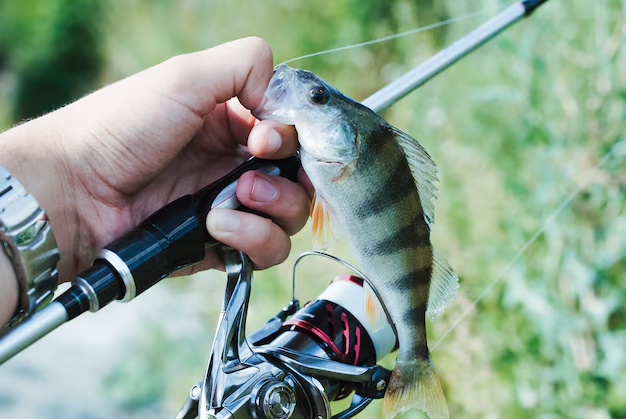When you first hear the term “maggotdrowners,” you might be puzzled. What could it possibly mean? To the uninitiated, it might conjure images of pest control or something equally odd. However, in the world of angling—a beloved pastime for millions worldwide—”maggotdrowners” is a term affectionately used to describe fishing enthusiasts who primarily use maggots as bait.
This quirky nickname, though humorous, encapsulates a rich subculture within the broader angling community. In this article, we will explore the origins of the term, its connection to fishing, and why maggots remain an enduring choice for many anglers.
What Does “Maggotdrowners” Mean?
Simply put, “maggotdrowners” is a lighthearted moniker for anglers who use maggots as bait. Maggots are small, wriggling larvae, often of the common housefly or bluebottle fly. These tiny creatures are a staple in fishing because they are inexpensive, widely available, and incredibly effective at attracting a variety of fish species.
The term likely emerged as a playful jab at the practice of tossing maggots into water as bait. The idea of “drowning” maggots in the process of fishing added a humorous twist, and the nickname stuck. Today, it’s used both within and outside of the fishing community to describe this unique aspect of the sport.
The Role of Maggots in Angling
Maggots have long been a favorite among anglers for a number of reasons:
- Universal Appeal: Many fish species, including roach, perch, and bream, are highly attracted to maggots. Their movement in the water mimics that of natural prey, making them irresistible to fish.
- Cost-Effectiveness: Compared to other bait options, maggots are budget-friendly. They’re readily available at most tackle shops and can even be cultivated at home with minimal effort.
- Ease of Use: Maggots are small and easy to handle, making them suitable for anglers of all skill levels. Whether you’re a seasoned pro or a beginner, maggots are a reliable choice.
- Versatility: Maggots can be used in various ways—on their own, as part of a groundbait mix, or even dyed different colors to suit specific fishing conditions.
The History of Maggot Fishing
The use of maggots in fishing dates back centuries. Early anglers quickly discovered that these wriggling larvae were highly effective at attracting fish. Over time, the practice of using maggots evolved, with anglers experimenting with different methods to maximize their effectiveness.
By the mid-20th century, maggots had become a staple in competitive fishing. Anglers began to refine their techniques, using specialized hooks and baiting methods to improve their chances of success. Today, maggots remain a cornerstone of modern angling, particularly in coarse fishing.
Techniques for Using Maggots
For those new to the world of maggotdrowning, here are some popular techniques to consider:
- Single Hook Baiting: This involves threading a single maggot onto a small hook. It’s a straightforward method ideal for targeting smaller fish.
- Double or Treble Baiting: Using two or three maggots on a hook can make your bait more appealing to larger fish. The additional movement increases its visibility.
- Loose Feeding: Scattering a handful of maggots into the water creates a feeding frenzy, attracting fish to your chosen spot. This technique is especially effective in still waters like ponds or lakes.
- Groundbait Mixes: Combining maggots with groundbait creates a potent mixture that can draw fish from a wider area. This method is particularly useful in competitive fishing scenarios.
The Community Behind Maggotdrowners
The term “maggotdrowners” has also given rise to an online community of like-minded anglers. Forums, social media groups, and dedicated websites provide spaces for enthusiasts to share tips, discuss techniques, and bond over their shared passion for fishing. These platforms serve as valuable resources for beginners and veterans alike, fostering a sense of camaraderie within the angling world.

One such community, aptly named “Maggotdrowners,” is a popular online forum where anglers discuss everything from baiting strategies to the best fishing spots. Members often share photos of their catches, offer advice to newcomers, and engage in friendly competitions. The forum exemplifies how a shared interest in something as specific as maggot fishing can bring people together.
The Environmental Impact
While maggot fishing is a time-honored tradition, it’s essential to consider its environmental implications. The use of maggots as bait is generally sustainable, as they are a byproduct of the fly lifecycle. However, anglers must be mindful of their practices to ensure they do not harm local ecosystems.
For instance, disposing of unused maggots responsibly is crucial. Releasing them into the wild can disrupt local insect populations or attract unwanted pests. Instead, anglers should dispose of them in designated waste areas or compost bins.
Additionally, many anglers are adopting eco-friendly practices, such as using biodegradable bait containers and minimizing their environmental footprint while fishing. These efforts help preserve natural habitats for future generations to enjoy.
Why the Term Endures
The enduring popularity of the term “maggotdrowners” speaks to the humor and camaraderie within the angling community. It’s a reminder that fishing is not just about catching fish; it’s also about enjoying the experience, sharing laughs with fellow anglers, and embracing the quirks of the sport.
In a world where hobbies can sometimes feel overly serious or competitive, the term “maggotdrowners” adds a touch of levity. It’s a nod to the grassroots nature of fishing, where simplicity and creativity often reign supreme.
Conclusion
The world of maggotdrowners is a fascinating slice of angling culture. From the practical benefits of using maggots as bait to the vibrant communities that have formed around this practice, there’s much to appreciate about this unique aspect of fishing. Whether you’re a seasoned angler or a curious newcomer, embracing the spirit of the maggotdrowner can lead to countless hours of enjoyment by the water.
So, the next time you hear someone refer to themselves as a maggotdrowner, you’ll know they’re not just talking about bait—they’re celebrating a cherished tradition and a shared love for the art of fishing.


